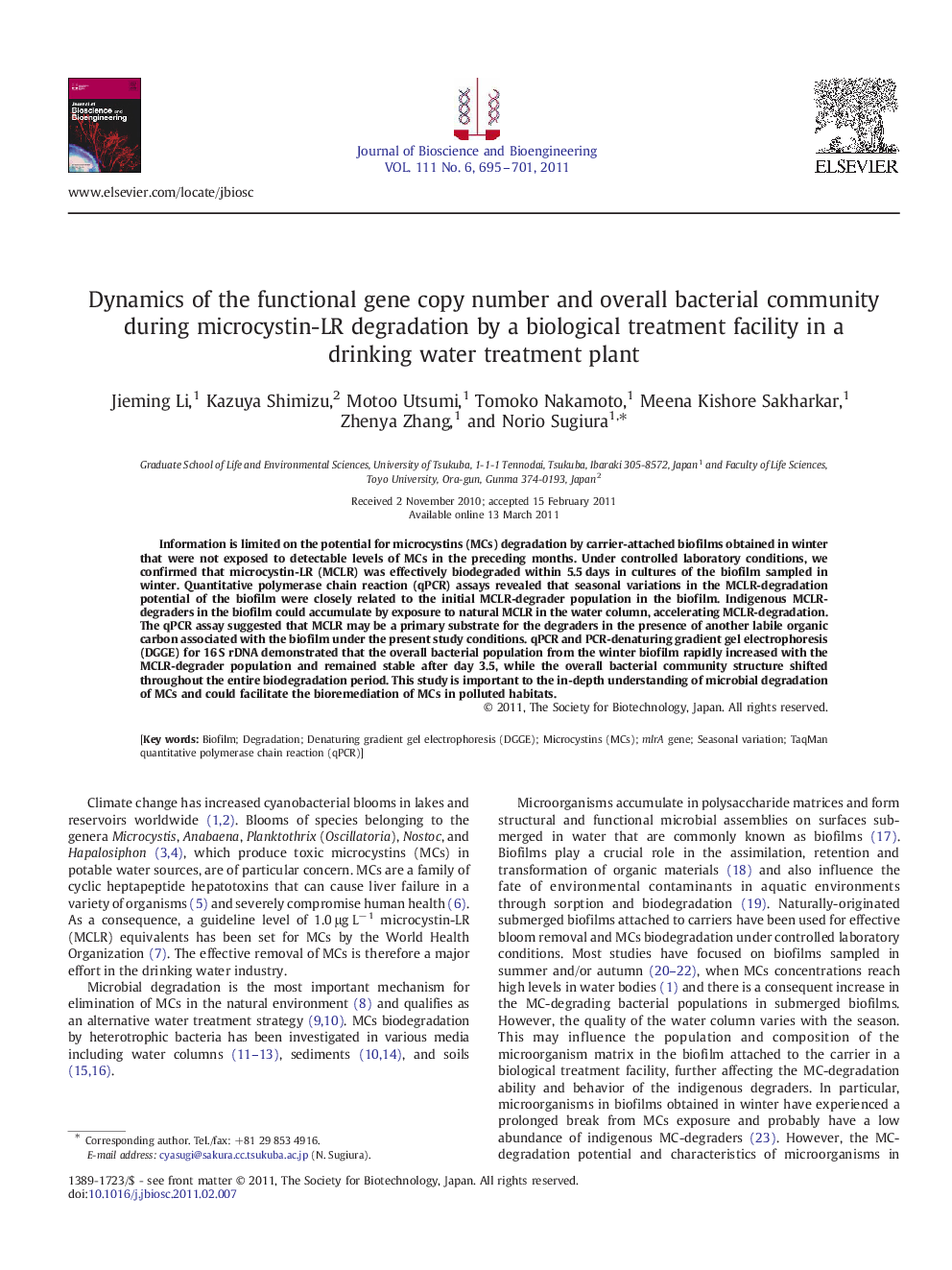| Article ID | Journal | Published Year | Pages | File Type |
|---|---|---|---|---|
| 21620 | Journal of Bioscience and Bioengineering | 2011 | 7 Pages |
Information is limited on the potential for microcystins (MCs) degradation by carrier-attached biofilms obtained in winter that were not exposed to detectable levels of MCs in the preceding months. Under controlled laboratory conditions, we confirmed that microcystin-LR (MCLR) was effectively biodegraded within 5.5 days in cultures of the biofilm sampled in winter. Quantitative polymerase chain reaction (qPCR) assays revealed that seasonal variations in the MCLR-degradation potential of the biofilm were closely related to the initial MCLR-degrader population in the biofilm. Indigenous MCLR-degraders in the biofilm could accumulate by exposure to natural MCLR in the water column, accelerating MCLR-degradation. The qPCR assay suggested that MCLR may be a primary substrate for the degraders in the presence of another labile organic carbon associated with the biofilm under the present study conditions. qPCR and PCR-denaturing gradient gel electrophoresis (DGGE) for 16 S rDNA demonstrated that the overall bacterial population from the winter biofilm rapidly increased with the MCLR-degrader population and remained stable after day 3.5, while the overall bacterial community structure shifted throughout the entire biodegradation period. This study is important to the in-depth understanding of microbial degradation of MCs and could facilitate the bioremediation of MCs in polluted habitats.
